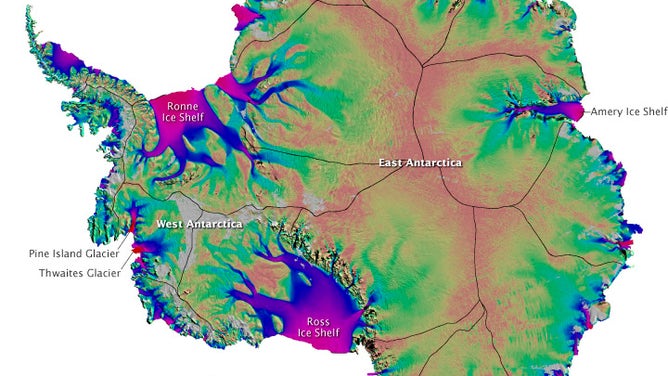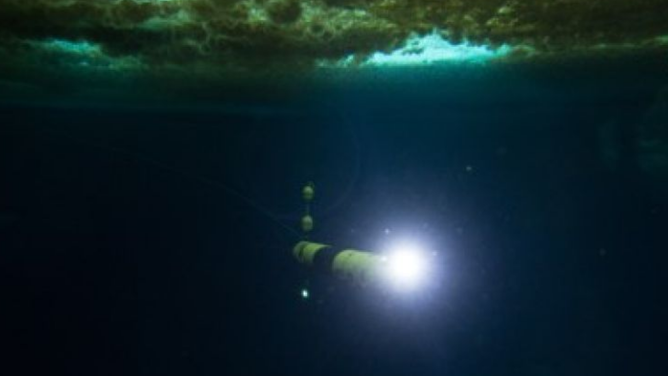Antarctica’s ‘Doomsday Glacier’ is melting away differently than scientists first thought
Research published in the journal Nature showed that melting below the floating ice shelf is slower than computer models estimated. Observations also determined that melting in cracks and crevasses is happening faster than in other regions.
Exploring the Thwaites Glacier
Research published in the journal Nature showed that melting below the floating ice shelf is slower than computer models estimated. Observations also determined that melting in cracks and crevasses is happening faster than in other regions. (International Thwaites Glacier Collaboration)
Researchers monitoring the rapid melting of the world’s widest glacier now have a better understanding of its natural processes due to an extensive deployment of probes and warn that trouble looms due to a warming climate.
Findings recently published in the journal Nature said changes under the Thwaites Glacier are different from what researchers first believed.
Scientists reported melting below the ice shelf is slower than many computer models estimated, but observations also determined that thawing in cracks and crevasses is happening faster.
Despite the new theories about Antarctica’s Florida-sized glacier, a joint UK-US research program, known as the International Thwaites Glacier Collaboration, said since the 1990s, around 8.7 miles of what used to be ice touching the seafloor has disappeared.
"Our results are a surprise, but the glacier is still in trouble. If an ice shelf and a glacier are in balance, the ice coming off the continent will match the amount of ice being lost through melting and iceberg calving. What we have found is that despite small amounts of melting there is still rapid glacier retreat, so it seems that it doesn’t take a lot to push the glacier out of balance," Dr. Peter Davis, an oceanographer with the British Antarctic Survey, said in a statement.

The Thwaites Glacier is known as the 'Doomsday Glacier' because of its threat to sea level rise.
(NASA)
‘UNCOVERING A PIECE OF HISTORY’: EXPLORERS FIND CAMERAS ON GLACIER LEFT BY YUKON HIKER IN 1937
A team of scientists and engineers employed the use of a robot called an Icefin that observed areas under the ice shelf that were previously impossible to survey.
Team members also found ice melting rapidly in staircase-like formations called terraces and other crevices.
"These new ways of observing the glacier allow us to understand that it’s not just how much melting is happening, but how and where it is happening that matters in these very warm parts of Antarctica. We see crevasses, and probably terraces, across warming glaciers like Thwaites. Warm water is getting into the cracks, helping wear down the glacier at its weakest points," stated Dr. Britney Schmidt, an associate professor at Cornell University and lead author of one of the new studies.
Thwaites Glacier is believed to be responsible for around four percent of global sea-level rise, and if it were to collapse completely, coastal communities could see a water level rise of around 2 feet.

Map of the Antarctic
(NASA)
NORWEGIAN CRUISE SHIP DAMAGED AFTER STRIKING ICEBERG IN ALASKA
Thwaites is not the largest glacier in the world, but experts fear if the 74,000 square mile basin disappears, other parts of the West Antarctic Ice Sheet could rapidly deteriorate.
In its totality, the ice sheet is nearly twice the size of Alaska, and simulations show that if the entire area were to collapse, a global sea level rise of at least ten feet would be possible.
The International Thwaites Glacier Collaboration is the most extensive campaign ever undertaken in Antarctica, and field operations are expected to conclude by 2025.

Scientists conducted a study beneath Antarctica's Thwaites Glacier with the help of a robotic underwater vehicle
(NASA)
